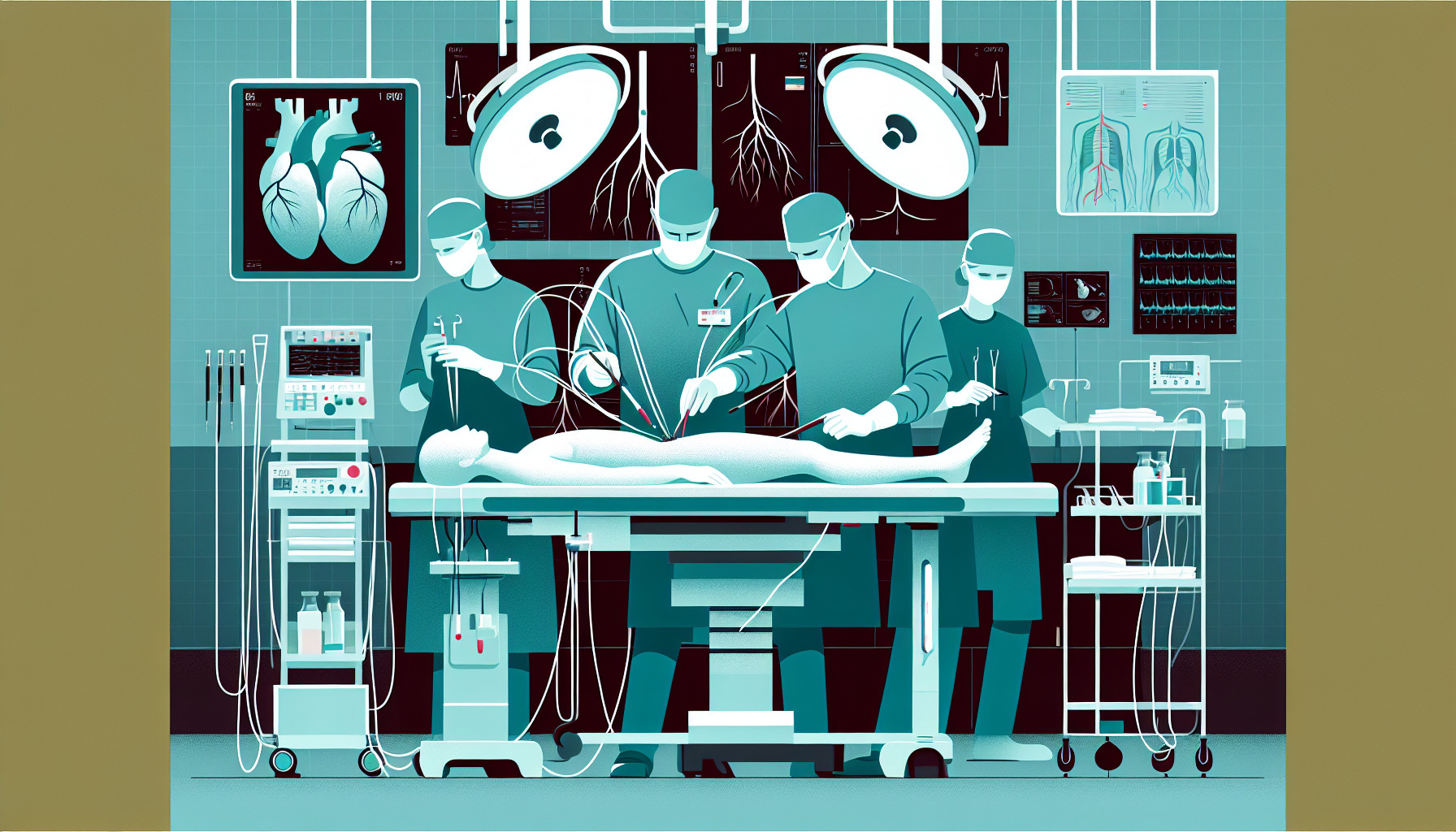Our Summary
This research paper is exploring how changes in the way vascular (related to blood vessels) surgery is done is affecting the training and experience of new surgeons. Specifically, more and more surgeries are being done using a method called endovascular aneurysm repair, which is less invasive than traditional surgery. This is reducing the opportunities for trainee surgeons to gain experience in the more traditional surgical treatment of aortic aneurysms - a dangerous condition where the main blood vessel in the body bulges and can potentially burst.
The researchers are also investigating whether a similar reduction in experience is occurring with two specific procedures - infrapopliteal endovascular therapy and vein bypass. These procedures are used to treat vascular disease in the lower extremities (legs).
They found that just over a quarter of newly qualified vascular surgeons (27%) had performed 10 or fewer infrapopliteal vein bypasses, and just under a third (29%) had performed 10 or fewer infrapopliteal endovascular procedures. There was no difference in the amount of traditional bypass operations performed by the different types of trainees (fellows and residents), but residents did do more of the endovascular procedures than fellows.
The researchers conclude that over one in four new vascular surgeons are graduating with a low number of these specific procedures under their belt. They suggest that vascular surgery training programs need to look at how many of these procedures trainee surgeons need to do to be proficient, and ensure they are getting enough practice.
FAQs
- What is endovascular aneurysm repair and how is it affecting the training of new surgeons?
- What are infrapopliteal endovascular therapy and vein bypass procedures?
- What is the concern regarding the experience of newly qualified vascular surgeons with specific procedures like infrapopliteal vein bypasses and infrapopliteal endovascular procedures?
Doctor’s Tip
A helpful tip a doctor might tell a patient about vascular bypass is to follow post-operative care instructions carefully, including taking prescribed medications, attending follow-up appointments, and engaging in physical therapy as recommended to ensure a successful recovery.
Suitable For
Patients who are typically recommended vascular bypass surgery include those with severe peripheral artery disease (PAD) that is causing pain, difficulty walking, or non-healing wounds in the legs. Patients with blocked or narrowed arteries in the legs, known as peripheral artery disease, may benefit from vascular bypass surgery to improve blood flow to the affected area. Additionally, patients with an aortic aneurysm, a bulge in the main blood vessel in the body, may also be recommended for vascular bypass surgery to prevent the risk of rupture. Other conditions that may warrant vascular bypass surgery include carotid artery disease, renal artery disease, and mesenteric artery disease.
Timeline
- Before vascular bypass:
- Patient experiences symptoms of vascular disease such as pain, swelling, or ulcers in the legs.
- Patient undergoes diagnostic tests such as ultrasound or angiography to determine the extent of the blockage in the blood vessels.
- Surgeon recommends vascular bypass surgery as a treatment option.
- During vascular bypass:
- Patient is prepped for surgery and given anesthesia.
- Surgeon makes an incision in the leg to access the blocked blood vessel.
- Surgeon uses a graft (either a synthetic tube or a vein from another part of the body) to bypass the blocked area and restore blood flow.
- Surgery typically takes several hours to complete.
- After vascular bypass:
- Patient is monitored in the hospital for a few days to ensure proper healing and blood flow.
- Patient may need to participate in physical therapy to regain strength and mobility in the affected leg.
- Patient follows up with the surgeon for post-operative care and monitoring of the bypass graft.
- Patient experiences improved blood flow and reduced symptoms of vascular disease.
Overall, vascular bypass surgery can significantly improve the quality of life for patients with vascular disease by restoring proper blood flow to the affected area.
What to Ask Your Doctor
How many vascular bypass surgeries have you performed in the past year?
What is your experience with endovascular aneurysm repair compared to traditional surgical methods?
What are the potential risks and benefits of undergoing a vascular bypass surgery?
How long is the recovery period after a vascular bypass surgery?
Are there any alternative treatment options available for my condition?
Will I need to follow a special diet or exercise regimen after the surgery?
How often will I need to follow up with you after the surgery?
What should I do if I experience any complications or side effects after the surgery?
Can you provide me with information about the success rates of vascular bypass surgeries for my specific condition?
Are there any specific factors that could affect the outcome of the surgery in my case?
Reference
Authors: McCallum JC, Wyers MC, Soden PA, Eidt JF, Guzman RJ, Schermerhorn ML, Chaikof EL, Hamdan AD. Journal: J Vasc Surg. 2018 Nov;68(5):1533-1537. doi: 10.1016/j.jvs.2018.01.054. PMID: 30360842
